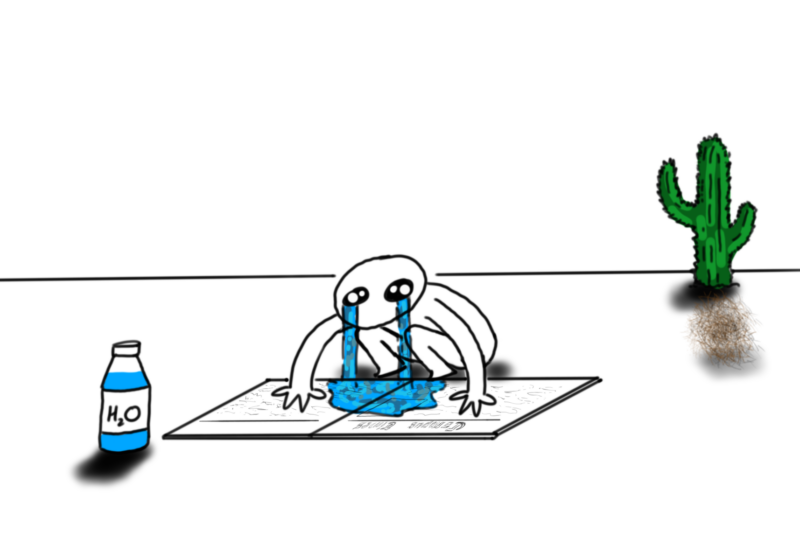From the time they are young, most girls dream of growing up to become models. The glamour of the makeup, hair, clothing, and the thrill of walking the runway is enough to entice most girls. But only a select few make the cut and fit the look that agencies desire. If one does make the cut, it’s not all fun, games, and glitter; it takes serious talent and a huge time commitment.
UR has a handful of models among its student body. Junior Brynn Wilkins is one. She didn’t really start modeling until about three years ago when she was asked to do a one-time gig for a friend at RIT. Soon, she had more requests than she knew how to handle.
“After the class [at RIT] saw those pictures, they all wanted to know who I was and if I could model for them, too,” she said. “I quickly began to get a lot of requests to model for RIT students, and my modeling career took off from there.”
Wilkins believes that her work in the theater has been extremely helpful in her modeling career.
“I’ve always been involved in performing, particularly dance and theater, so modeling was a natural fit for me,” she said. “I had always been interested in modeling because it draws on the model’s ability to portray different characters via facial expressions and body language skills I have learned in my study of acting and dance.”
As we’ve seen from reality shows on TV, many “helicopter parents” push their children into modeling and beauty pageants at a young age. The behavior of such mothers on “Toddlers and Tiaras” characterizes this phenomenon. The girls in this show can’t be more than five or six-year-old yet their parents pressure them to be beautiful and compete.
Luckily, none of the models I talked to had this experience.
Sophomore Mary O’Hehir said that her parents are indifferent toward her modeling career.
“As long as I enjoy modeling and it doesn’t interfere with my school work, they are willing to help provide me with transportation to gigs, casting calls, etc,” she said.
Wilkins said her parents were supportive of her ventures in modeling. They traveled with her to New York and Washington D.C. for photo shoots and runway shows.
“I am very fortunate to have such supportive parents who encourage me to follow my dreams, no matter how unrealistic,” she said.
Modeling is considered another art form. It is a process that involves both the photographer and the model.
“One of my favorite aspects of modeling is collaborating with photographers, hair and makeup artists, and stylists to create amazing art,” Wilkins said. “Despite popular belief, modeling is a lot harder than it looks. It definitely involves a lot more thought than just standing in front of a camera and looking pretty.”
The photo shoots and runway appearances have, according to Wilkins and O’Hehir, their share of perks.
“My favorite part of being a model is meeting so many people,” O’Hehir said. “The designers and other models all have their own interesting histories, which I never would have had the opportunity to hear without this experience. Perks of the job include occasionally being given free items, getting your hair and makeup professionally done, and, of course, the adrenaline rush when you walk down the runway.”
Still, there is a social stigma around models and the industry itself. Many people assume that models are air-heads who only care about looks.
“People assume that models don’t necessarily have any brains behind their pretty faces, which is just not true,” O’Hehir said. “Most models I met were college students like myself and involved in numerous other activities. I have brains from my education here at UR and am involved in activities ranging from playing piano to motocross racing.”
As one might expect, there are often pressures to look and act a certain way in the business.
“You are being constantly judged on your looks, and it is easy to compare yourself to the other models,” O’Hehir said. “It is important to keep in mind that everyone is beautiful in their own way.”
Wilkins disagrees. She believes it is possible to avoid the pressures and hold your head high.
“I have a strong sense of who I am, and I think that is very important for anyone going into this industry,” she said. “I have also been very fortunate; the people I work with like to photograph a diverse array of models with different body types and looks. UR has an incredibly supportive and embracing fashion community, and I have never felt pressured to change my look or who I am.”
Modeling does not have to end upon graduation either.
“I definitely want to pursue modeling in the future,” she said. “I am already signed with a modeling agency, and I plan to pursue modeling as much as I possibly can.”
For others like O’Hehir, they are only doing it while in college.
“I don’t have any long-term plans that involve modeling,” she said. “I am merely enjoying the experience while it lasts.”
Sanguinetti is a member of
the class of 2015.






